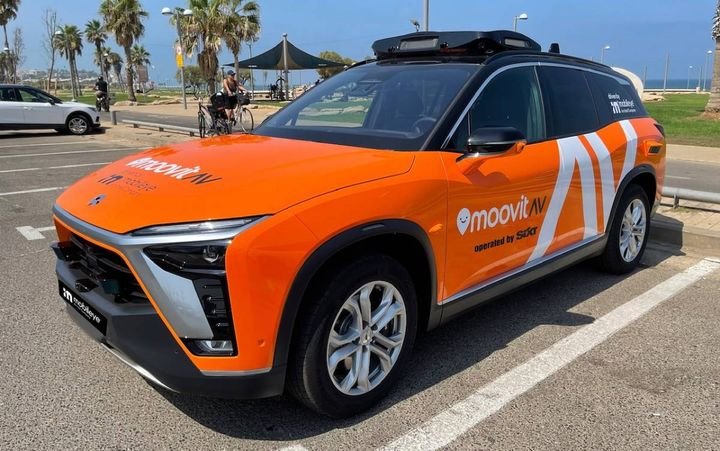
The driverless taxi pilot is set to launch in Munch next year. Riders can hail the service via the Moovit app or the SIXT app.
Photo: Mobileye
Intel subsidiary Mobileye and Sixt have announced a new collaboration to begin offering autonomous ride-hailing services in Munich in 2022.
The news came during a keynote at IAA Mobility on Sept. 7 from Intel CEO Pat Gelsinger and Sixt SE Co-CEO Alexander Sixt. The collaboration aspires to scale driverless ride-sharing services across Germany and other European countries later this decade.
Riders will be able to access the service via the Moovit app as well as the Sixt app. The autonomous robotaxi offering will be included in Sixt’s mobility platform ONE, which combines products for ride hailing as well as car rental, car sharing, and car subscriptions. By integrating the services of partners like Mobileye, the ONE mobility platform allows Sixt customers worldwide access to more than 200,000 vehicles, 1,500 cooperation partners, around 1.5 million drivers, and soon robotaxi services.
The autonomous robotaxi option will be part of the ride-hailing service Sixt ride and was demonstrated during Alexander Sixt’s keynote. Mobileye also unveiled the vehicles that will be produced in volume and used for the service in Germany. It is the first time Mobileye has publicly displayed its self-driving system, known as Mobileye Drive, in a vehicle that will be used for commercial, driverless ride-hailing services.
A recently enacted autonomous vehicle (AV) law permits driverless vehicles on German roads, allowing Mobileye robotaxis to begin early-rider testing on Munich streets in 2022. The fleet will then move from test to commercial operations upon regulatory approval. “Germany has shown global leadership toward a future of autonomous mobility by expediting crucial AV legislation,” Gelsinger said. “Our ability to begin robotaxi operations in Munich next year would not be possible without this new law.”
Mobileye will own the robotaxi fleet used in the Munich service, while Sixt will draw upon its established expertise in providing, maintaining, and operating the fleet. The vehicles will include the MoovitAV service and Sixt branding once the service launches in Munich so customers can easily distinguish between traditional ride-hailing and autonomous fleet vehicles.
A separate commercial robotaxi fleet was also announced last year in China.
